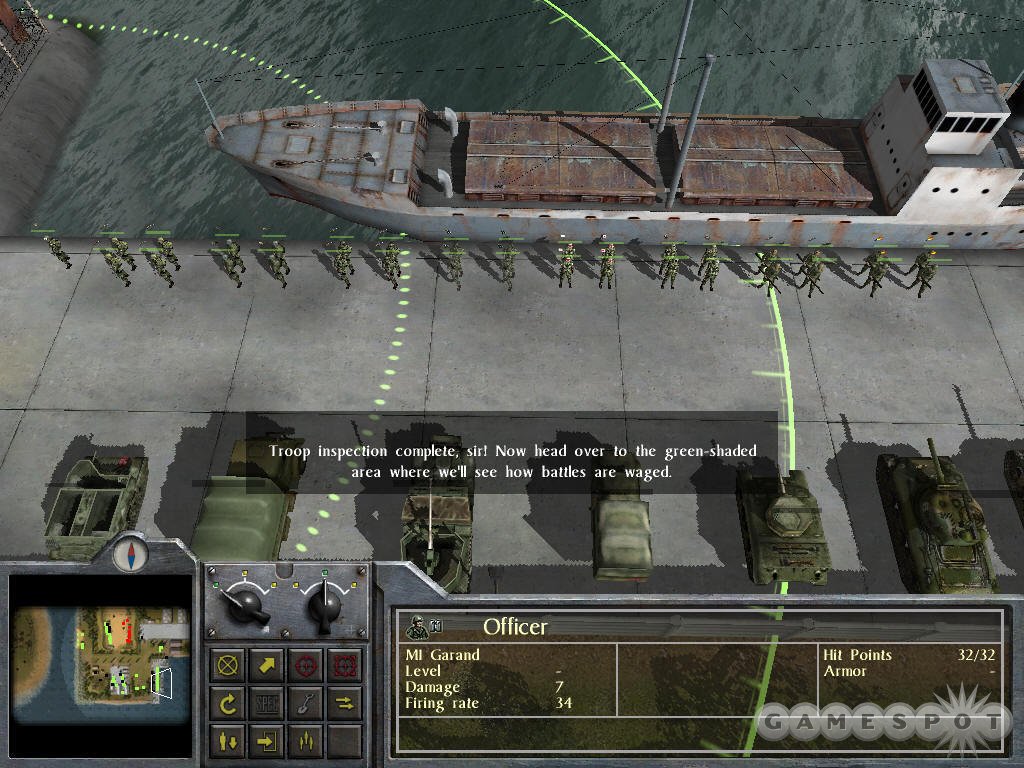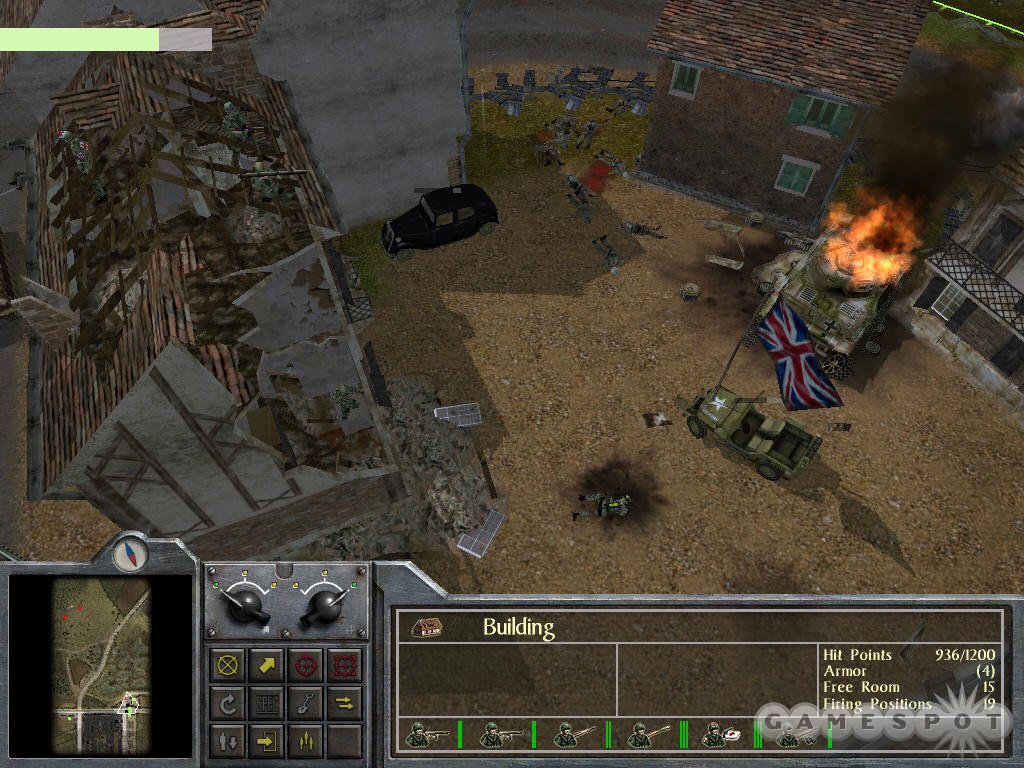The Normandie Mémoire committee has designated Digital Reality's D-Day as the official commemorative game of the D-Day 60th anniversary. The men who gave their lives for freedom deserve a far better memorial than this lame real-time strategy game. There are already plenty of World War II RTS games out there, so if you're going to release one, you need to do something special to set yours apart from the rest. D-Day sets itself apart all right...by doing things especially badly. At best, D-Day offers up a tepid serving of cookie-cutter RTS gameplay. At worst, it makes you descend into micromanagement hell.

On first inspection, D-Day looks like it has the makings of a cool, tactical WWII RTS that eschews base-building and resource-gathering for the nuts and bolts of combat. You'll field nine types of infantry, like snipers, sappers, medics, and machine gunners. You'll head into battle with self-propelled guns, flamethrower tanks, recon motorcycles, artillery pieces that you can haul with trucks, and more. You can even commandeer enemy vehicles and guns. Armored units are rated for front, rear, and side armor, and they feature different stats for main and secondary guns. An onscreen encyclopedia fills you in on the historical units and their game counterparts. You can also read historical backgrounds on the missions and watch short videos that feature D-Day veterans.
D-Day also offers the basic amenities you'd expect from any good RTS. You can pan, tilt, and rotate the camera entirely with the mouse, so no fumbling with the keyboard is required. You can choose from a variety of game speeds, and you can issue orders while the game is paused. You can quickly select unit movements and combat stances, like "hold position" or "fire at will."
That's all good on paper, but once you start playing D-Day, the ugly reality starts to sink in. The tutorial gets things off to a pitiful start. Instead of actually showing you how the interface and commands work, the tutorial merely tells you how they work via a voice-over, where sections of the manual are read as you sit there and twiddle your thumbs. Why aren't the interface buttons and combat options highlighted and interactively illustrated as they're being discussed?
As for the actual meat of the game, it's undercooked and hard to swallow. You only get 12 single-player missions and no skirmish mode or random map options (though you do get a user-unfriendly map-editor utility). At best, the missions are predictable, repetitive, and tedious. At worst, they're unbalanced and unclear. Multiplayer offers three basic modes: deathmatch, conquer (that is, seize territory), and capture the flag. Good luck finding opponents, though. We never could.
Abysmal artificial intelligence can make playing against the computer a nightmare. The German troops were apparently trained in WWII Japan, because these kamikaze soldiers will merrily stroll directly toward a row of tanks that will fire upon them. In fact, mass suicide is the German troops' favorite tactic. Meanwhile, your troops are happy to stand around, while doing nothing, just before letting themselves be butchered. Your units have a hard time following orders, so you have to hand-hold them while repeatedly reissuing commands. Severe pathfinding problems mean that just getting a few units down the road can be a real chore. Consequently, major traffic jams are common on the dense maps. Historical accuracy gets thrown out the window, too, so instead of armor units having dedicated crews trained for the job, you crew your tanks with whatever infantry you have handy. This leads to disconcerting oddities, like clicking on a Sherman tank and hearing, "Rifleman at your service, sir."
D-Day's interface makes things worse. It can require too many button presses to carry out simple operations. Why, for example, do you need to press a couple of buttons before you can make a flak gun fire at ground targets? Worse still, it's nearly impossible to tell the different soldier types apart without careful examination. What on Earth is the point of having medics, scouts, and so on if you can barely tell them apart, even when zoomed all the way in on the action? Why not include some large, clear icons to differentiate them? Instead of encouraging sophisticated tactics based on different unit abilities, D-Day encourages you to throw up your hands in despair while resorting to the old "band-box 'em and chuck 'em into the meat grinder" technique.

Outside of the severe problem with the confusing soldiers, Digital Reality's graphical efforts are pleasant, if not particularly memorable. Models are admirably well detailed, and colorful textures abound, though in the end, there's nothing really inspiring to see. The game boasts an evocative musical score, with a rousing main theme, but beyond that, the audio can be as bad as the game mechanics. Some voice-over accents are dubious, repeated shouts of "Die, Krauts!" or similar cornball lines get old fast, and the cries of dying men are so campy that they invite laughter instead of concern.
If you're looking for a real-time WWII game, you can safely (and wisely) pass on D-Day. You'd do better with Blitzkrieg series or Codename: Panzers, for example. Or try the hybrid turn-based/real-time Combat Mission series. D-Day, by contrast, is a victory for bad game design.